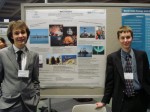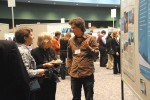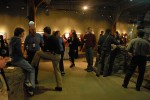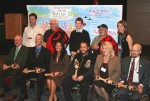- Ryan and Radu at the Poster presentation.
- Radu and Adam at Race Rocks Poster
“The biennial Puget Sound Georgia Basin Ecosystem Conference is the largest, most comprehensive scientific research and policy conference in the Salish Sea region. The 2009 conference, hosted by the Puget Sound Partnership and Environment Canada, built upon the experience of previous conferences by connecting scientific research and management techniques to priorities for meaningful action. The 2009 conference theme was The Future of the Salish Sea: A Call to Action. Since 2003, the conference has moved from chronicling science research to exploring the science/policy interface. The 2009 conference theme captured this progression from sound science to informed action. Conference participants had the opportunity to apply shared knowledge by developing priorities and a commitment to post-conference engagement.
Conference sub-themes included:
Air Quality & Climate Change
Ecosystem Management Strategies and Techniques
Habitat, Land Use, and Species
Marine & Freshwater Resources “
Adam Harding presented The Pearson College-EnCana-Clean Current Tidal Power Demonstration Project at Race Rocks
Photos: http://www.flickr.com/photos/designer_psp/collections/72157613549032493/
Videos:
http://www.psp.wa.gov/videos/mediaplayer/video_library_psgb.php
Publications:
http://gristmill.grist.org/story/2009/2/10/145023/460http://gristmill.grist.org/story/2009/2/6/16054/64735
- Ryan and Radu at the Poster presentation.
- Ryan explaining the Race Rocks Poster
- Adam and Radu in discussion with conference participants
- Adam served on the panel on energy.
- Adam being presented with a token of appreciation for his presentation.
- Adam as part of the witness group.
- Adam Harding

A video from the Puget Sound Partnership Conference with Adam Harding presenting the Call to Action in the Day 3 Closing Session. Click to start.
For the complete set of video of the plenary sessions see this link:
http://www.psp.wa.gov/videos/mediaplayer/video_library_psgb.php
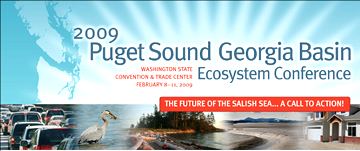
The complete text of the video above “A Call To Action for the Salish Sea.”. Developed by the Call to Action Team at the 2009 Puget Sound Georgia Basin Ecosystem Conference. Read aloud in closing plenary by Adam Harding, Pearson College, on Wednesday, February 11th, 2009 (PDF)


